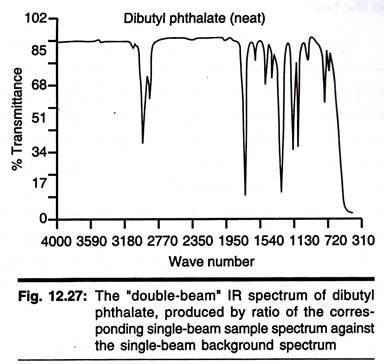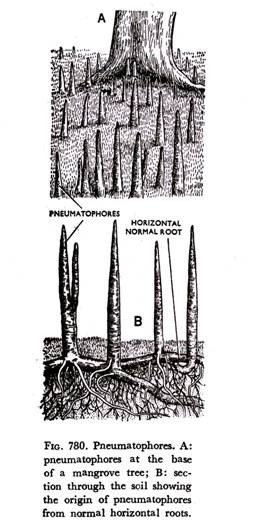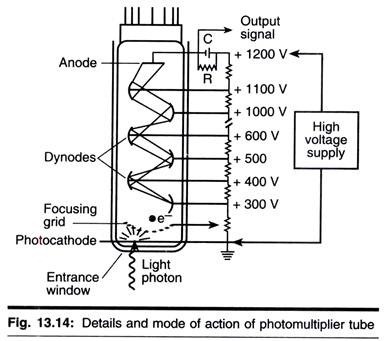According to the density and hardness, bone is divided into two types: 1. Compact Bone 2. Cancellated Bone.
1. Compact Bone:
Distribution:
The outer layer of all bones and the shaft (diaphysis) of the long bones are entirely compact in nature.
Histology:
The shaft of the long bones (Fig. 1.48) is the typical example of this type of bone tissue.
Here the bony deposit is found to take place in four different forms:
i. Haversian System (Osteon):
It is the structural and functional unit of compact bone.
In addition to the central medullary canal it is found that the wall of the compact bones is pierced by numerous narrow longitudinal tunnels called the Haversian canals which are branches of horizontal channels, known Volkmann’s canals (communicating canals).
When a tiny polished piece of compact bone cut at 90° to the long axis, the Haversian canal is found as black spots varying in diameter (average 50µ).
Each Haversian canal contains one or more blood vessels (mainly capillaries and venules), lymphatics, nerves and there may be few marrow cells.
Around each Haversian canal, varying numbers (8-15) of layers of bone are deposited in concentric circles (Haversian lamellae). Between the adjacent layers there are tiny spaces called the lacunae. These lacunae are also arranged in circles around the Haversian canal.
A number of fine wavy channels run out from all round the lacuna and are known as the canaliculi. The lacunae contain the osteocytes which become imprisoned by the surrounding calcium deposit and the canaliculi contain the processes of the osteocytes.
Through the canaliculi, the lacunae communicate with each other as well as with the central Haversian canal, but as a rule do not communicate with the lacunae of the other Haversian systems.
Each Haversian canal together with concentric lamellated bony deposit, the lacunae and the canaliculi, composes one Haversian system. Forming the outer boundary of such a system and separating this system from neighbouring ones, a bright thin line is often noticed. This is called cementing line of Ebner.
This Haversian system (Fig. 1.49) is the typical feature of the compact bones.
i. The angular interspaces between the neighbouring Haversian system do not show any regular lamellated appearance. Here the bone and the osteocytes are arranged in irregular layers, called by some as interstitial lamellae or ground lamellae.
ii. Periosteal lamellae (circumferential lamellae)—in addition to the lamellae of the Haversian system, another type of lamellae is found just under the periosteum, surrounding the compact bone. They are also found in an ill-defined manner throughout the depth of the bone passing in between the Haversian systems and roughly arranged concentrically around the central medullary canal.
Twigs of periosteal vessels pass into these lamellae and are lodged in horizontal channels, the canals of Volkmann (communicating canals).
These canals enter the bone perpendicularly to its long axis and communicate with the Haversian canals. The communicating canals originate in the periosteum. The periosteal lamellae are also pierced by calcified strands of fibrous tissue running form the periosteum. These fibres are called the perforating fibres of sharpey (Fig. 1.50).
Besides these, other fibres are not calcified and found to pass in a decussating manner involving both the Haversian and the periosteal lamellae. They are known as the decussating fibres of Sharpey. The Haversian canals and the central medullary canal are lined by a connective tissue membrane known as endosteum containing osteoblasts and osteoclasts.
iii. Endosteal Lamellae – There are few concentrically arranged thin plates or lamellae which line up the wall of the marrow cavity, known as endosteal lamellae. Those are related to the thin layer of fibrous connective tissue of the endosteum.
2. Cancellated or Spongy Bone:
Distribution: The inner parts of the flat bones, the rounded ends of the long bones, the body of the vertebrae, etc., possess cancellated bony tissue.
Histology:
In this type of bone, calcification is less dense. The inside of the bone is divided up by minute bony partitions giving a spongy appearance. The spaces are filled up with marrow and lined by endosteum. The calcium deposit shows a lamellated appearance but no true Haversian system is found.
Functions of Bone:
i. It performs a mechanical function in forming the skeletal support and shape to the body and in forming a leverage system whereby movement and work are possible.
ii. It affords protection to the vital organs of the cranial and thoracic cavities and to the deep blood vessels and nerves from injury.
iii. It serves as a great reservoir for minerals, specially phosphorus and calcium to the blood.
iv. The bone cells help in maintaining body’s electrolyte balance, particularly the distribution of calcium and phosphate ions.
v. They also serve a detoxicating function. Elements, such as lead, fluorine arsenic, radium, etc., are removed from the circulation and are deposited in the bones and teeth.
vi. It lodges the bone marrow, which is important in the formation of blood cells (haemopoietic function).
vii. It serves as the basis for the attachment of muscles (passive instrument of motion).
viii. It is one of the chief sites of reticulo-endothelial cells.
ix. It assists the respiratory system in forming the nasal cavity and the beginning of the digestive system in forming the mouth. It is also important in speech for clear enunciation of words forming the bones of the roof of the mouth.
x. It also assists in the transmission of sound to the auditory nerve of the inner ear in forming the ossicles of the middle ear.
Periosteum:
It is the outer membranous covering of bones except at the articular surfaces. It has got two layers—the superficial layer is made up of dense connective tissue fibres and fibroblast with a rich supply of blood vessels and lymphatics, from which a good part of the nutrition of bone is supplied. This layer has got no osteogenic function and thus limits bone growth.
The inner layer, cambium, possesses the capability of bone formation. This layer is composed of more loosely arranged connective tissue fibres and contains numerous spindle- shaped connective tissue cells which give rise to osteoblast and osteoclast for bone growth and repair during fracture. The inner (deeper) layer is thus known as osteogenic layer.
Functions of Periosteum:
i. It serves as a though fibrous covering and checks excessive bone growth. Normal bone formation is controlled primarily by the periosteum. When due to injury or surgical operation, it is torn off from the underlying bone; the liberated osteoblast start forming new bone at the site of injury and thus gives abnormal bone formation. There seems to be contact equilibrium between the growth of bone and periosteum.
ii. Carries nutritive vessels.
iii. Affords attachment to the muscles and tendons.
iv. Subperiosteal osteoblasts help to regenerate new bone and the healing of fracture.
Endosteum:
It is the lining membrane of the marrow cavity and extends as a lining membrane into the canal system of the compact bone. It is formed by condensation of the stroma of marrow. It contains reticular cells.
Functions:
It possesses both osteogenic and haemopoietic functions. Its activity takes part in the healing of fracture.
Bursae:
These consist of small connective tissue sacs with synovial fluid. They are distributed where pressure is exerted over moving joints (Fig. 1.51), e.g., between tendons and bone, between muscles, between skin and bone, etc.
Function:
They act as cushions, relieving pressure between moving parts.



